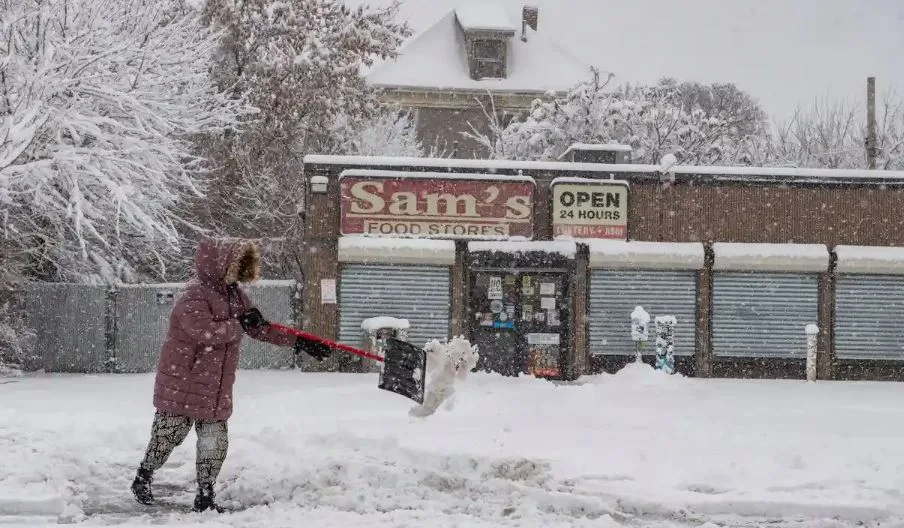Understanding the Arctic Blast and Cold Front Phenomena
What are Arctic Blast and Cold Front?
In the intricate dance of Earth’s atmospheric patterns, few events evoke a sense of awe and shivers quite like the Arctic blast and cold front. These meteorological phenomena bring a biting chill, transforming landscapes and testing the resilience of communities.
Extreme cold warning issued in Canada as US forecasters warn of wind chills in Texas and major snow in the Midwest and East coast
An extreme cold warning was issued in Alberta, Canada due to frigid Arctic air. Calgary may experience the coldest January day in two decades with temperatures plunging to -34.6F (-37C) on Friday. Strong winds over the weekend could make temperatures feel like -58F (-50C), leading to frostbite in under a minute.
The cold front is also set to push from the Rockies towards northern US plains on Thursday night before advancing south, the National Weather Service said, likely causing daily cold records to tumble in several places. In Texas and the southeast, “dangerously cold wind chills” are expected that will push temperatures below freezing.

According to the National Oceanic and Atmospheric Administration, last year was recorded as the fifth hottest year in the US. A global report confirmed that 2023 was the hottest year on record by a large margin. Climate researchers have suggested that sudden extreme blasts of cold weather in the US may be linked to global heating. The Arctic region is warming up four times faster than the rest of the planet, which is causing changes to the circular pattern of winds known as the polar vortex that usually keeps the cold massed upon the polar region.
In this blog post, we delve into the science behind the Arctic blast and cold front, unraveling the mysteries of these chilling weather occurrences.
Arctic Blast: The Icy Intruder

Overview: An Arctic blast is a meteorological term that describes an intrusion of extremely cold air from the Arctic regions into lower latitudes. This influx of frigid air can bring about a sudden and drastic drop in temperatures, often catching regions unprepared for the abrupt shift.
Causes: Arctic blasts are primarily driven by the polar jet stream, a fast-flowing ribbon of air that encircles the Northern Hemisphere. When the jet stream becomes wavy or buckles, it can allow the release of polar air masses southward. The displaced Arctic air then surges into regions accustomed to milder temperatures, leading to the distinctive and bone-chilling Arctic blast.
Effects: The impact of an Arctic blast is profound. Temperatures can plummet, freezing exposed surfaces and bodies of water. Snowfall may accompany the cold air, creating winter wonderlands or, in some cases, causing disruptions to daily life. The sudden onset of extreme cold can pose challenges to infrastructure, transportation, and the well-being of both human and animal populations.
Also Read America’s Tragedy: Mass Shootings Continues,1 killed, in Iowa school

Cold Front: Nature’s Boundary of Chill
Overview: A Cold front is a distinct boundary between a mass of cold air and a mass of warmer air. As the cold air displaces the warmer air, it can lead to dynamic weather changes, including a drop in temperature, precipitation, and shifts in atmospheric pressure.
Formation: Cold fronts form when a colder air mass advances and wedges beneath a warmer air mass. The denser, colder air acts as a bulldozer, lifting the warmer air, which cools and condenses, forming clouds. This process often results in the development of precipitation along the front.
Weather Effects: The passage of a cold front can bring a variety of weather phenomena. Thunderstorms, rain, snow, and even dramatic temperature drops are common occurrences. The leading edge of the Cold front is often marked by a distinct line of clouds, known as a squall line, indicating the boundary between the contrasting air masses.
Comparing the Arctic Blast and Cold Front:
While the Arctic blast and cold front share the commonality of ushering in colder air, they differ in scale and origin. The Arctic blast involves a large-scale intrusion of frigid air from the polar regions, affecting vast areas. On the other hand, a cold front is a more localized phenomenon, occurring at the boundary between two air masses and bringing dynamic weather changes over a specific region.
The Arctic blast and cold front represent nature’s way of reminding us of the dynamic and sometimes capricious nature of our atmosphere. From the sweeping cold embrace of Arctic air to the localized drama of a Cold front, these meteorological events leave an indelible mark on the landscapes they touch. Understanding the science behind these phenomena not only enhances our appreciation for the intricacies of weather patterns but also aids in preparing for the challenges they bring. As the seasons shift and temperatures fluctuate, the dance between warm and cold air masses continues, shaping the ever-changing canvas of our planet’s climate.

